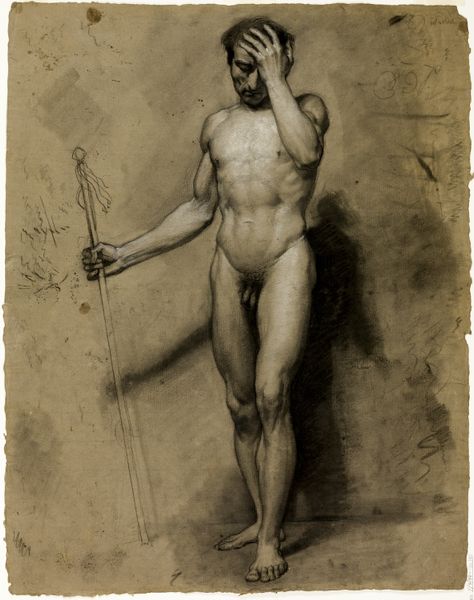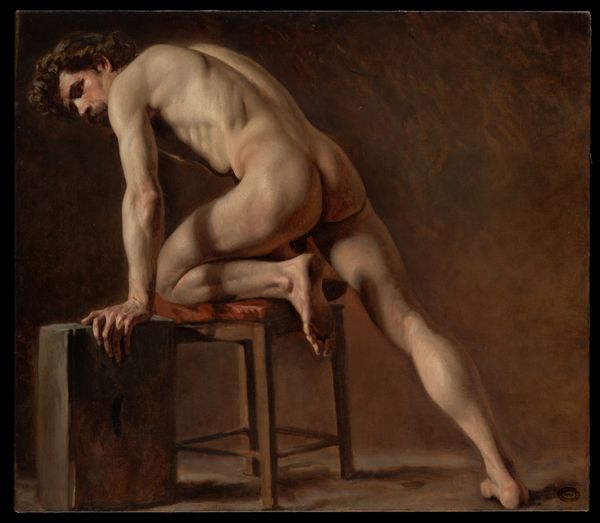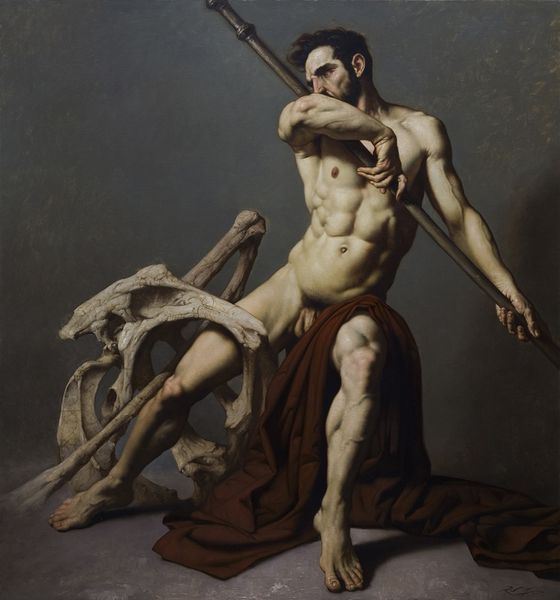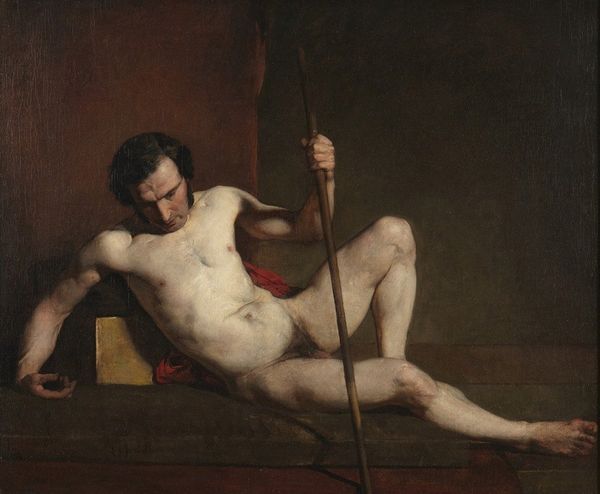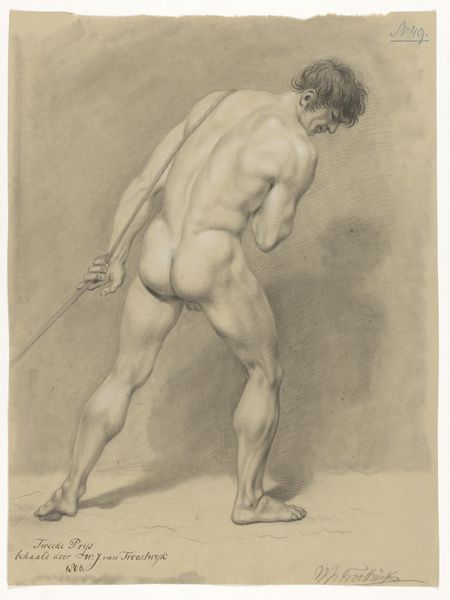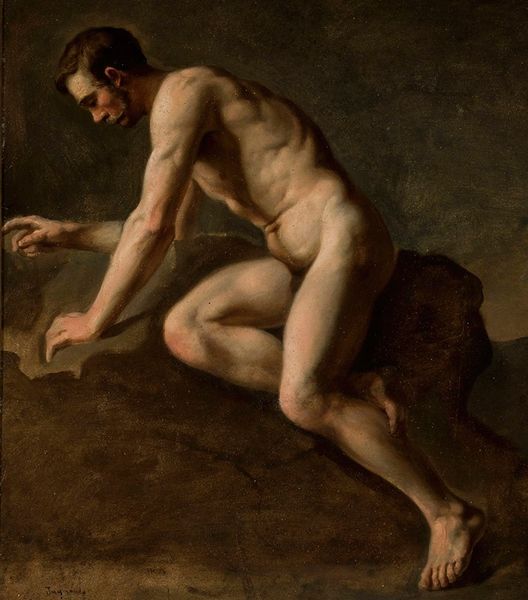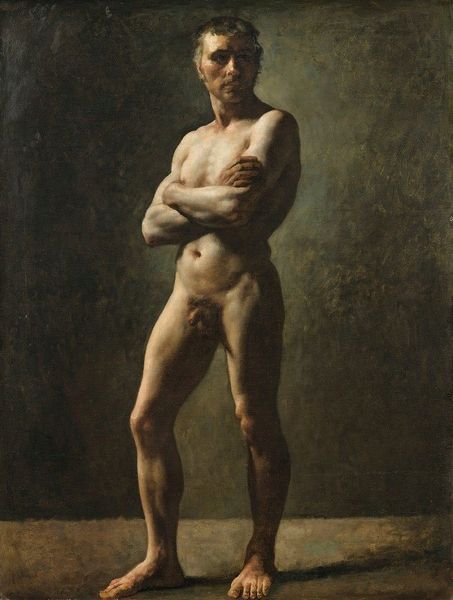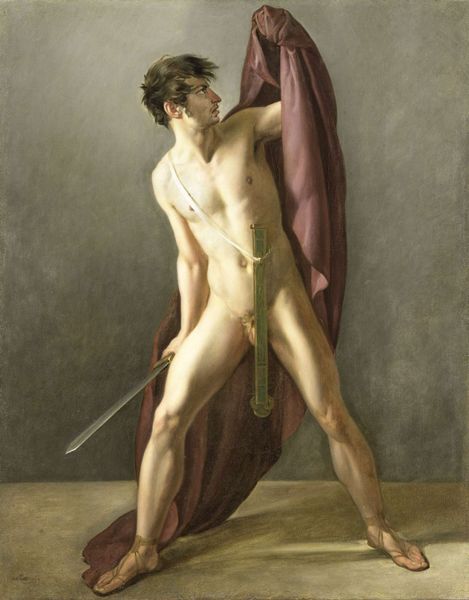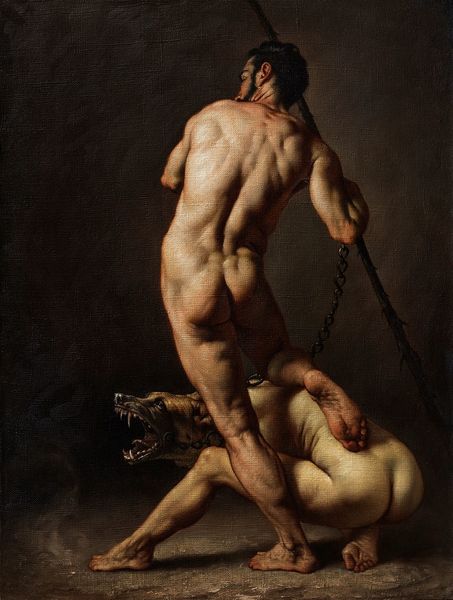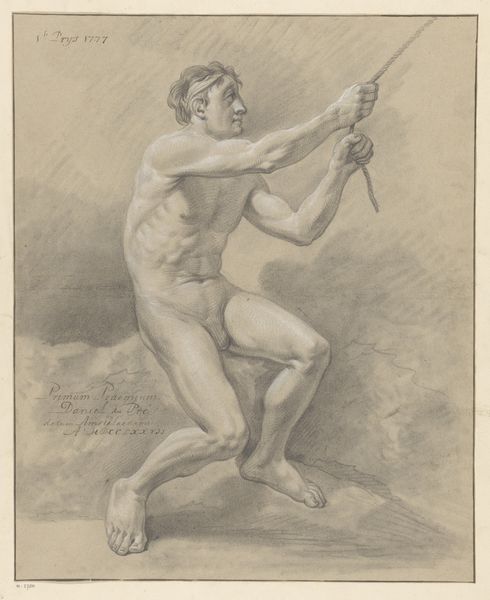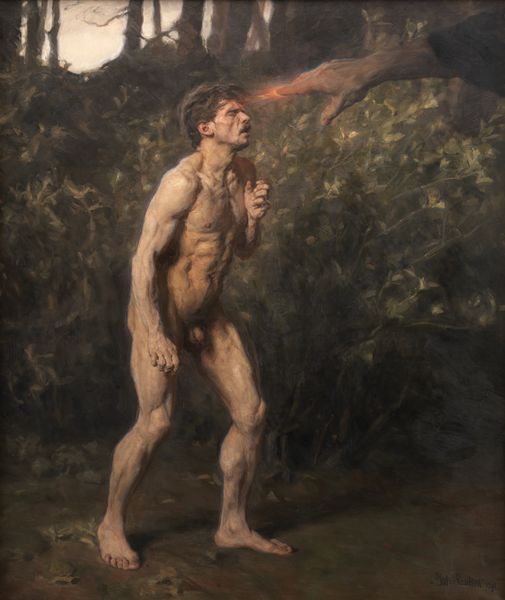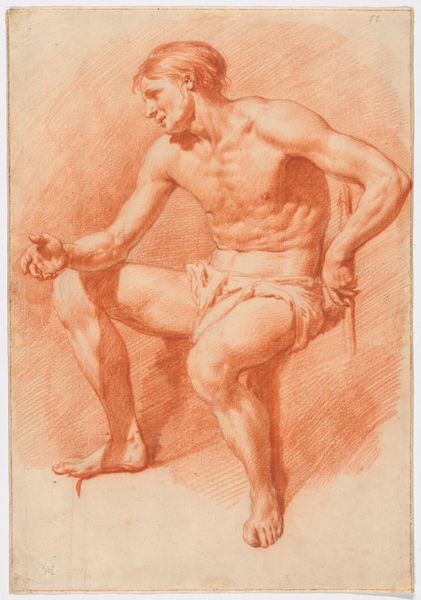
painting, oil-paint
#
neoclacissism
#
painting
#
oil-paint
#
figuration
#
classicism
#
romanticism
#
history-painting
#
academic-art
#
nude
#
male-nude
Dimensions: 31 3/4 x 25 1/4 in. (80.6 x 64.1 cm)
Copyright: Public Domain
Curator: I'm immediately drawn to the chiaroscuro in this piece. There's such dramatic play between light and shadow, highlighting the figure's muscularity. Editor: Indeed. What we're looking at is titled "Study of a Nude Man" by Pierre-Narcisse Guérin, likely executed between 1810 and 1820. It’s oil on canvas. Guérin, a significant figure in French Neoclassicism, straddled the line between the classical ideals and emerging Romantic sensibilities. Curator: It's interesting you mention that tension. While the pose is very reminiscent of classical sculpture—we see that contrapposto stance—there’s also a rawness in the depiction. The face is shadowed, almost melancholic. There's a vulnerable aspect that veers away from idealized perfection. Editor: Absolutely. Consider the historical context. The rise of Napoleon, the shifting power dynamics. The male nude, historically a symbol of strength and civic virtue, begins to reflect perhaps a questioning of those established narratives. This isn’t just a celebration of form; there’s almost a subtle commentary on the burden of masculinity and power. The subject looks as if he were leaning into the tool to brace himself. Curator: I see that. The tool the figure is clutching takes on added meaning beyond that of just a farm tool. It brings to mind images of the Roman soldier grasping his gladius, or some type of other military motif. Is Guerin alluding to something deeper, perhaps the inherent violence required to maintain order, and thus, authority? Editor: It’s compelling to consider it within a psychological framework too. Notice the dark background, how the light barely reaches his face, almost suggesting internal conflict. There’s something very timeless about the image, capturing the essence of human strength and vulnerability intertwined. It reflects, in its very form, how complex a man's place is during political upheaval. Curator: It does encourage such reflections on social, personal, and art historical connections, doesn’t it? Editor: It certainly does, which ultimately makes the piece very valuable. It gives you space to analyze these thoughts and themes.
Comments
No comments
Be the first to comment and join the conversation on the ultimate creative platform.
